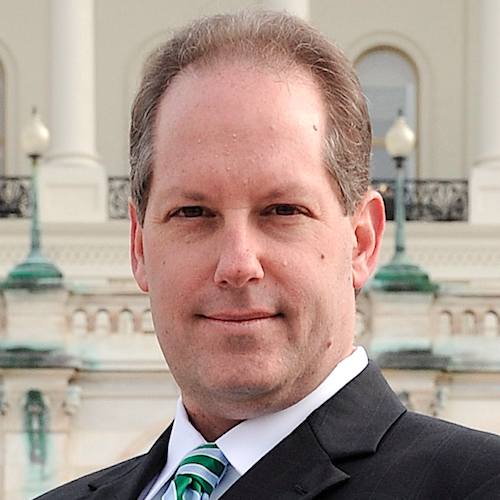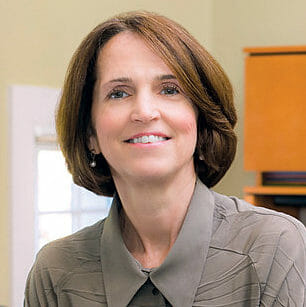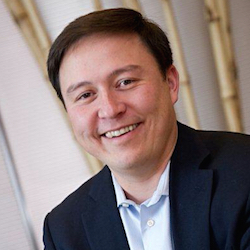
Credit: pishit/Getty Images
Editor’s Note: Read what these leaders had to say about occupancy recovery here.
Last year at this time, after 10 months of fighting the pandemic, senior living providers felt hope in the promise of the COVID-19 vaccines beginning to be administered to residents and staff members as well as in the expansion of a third round of aid from the federal Provider Relief Fund and the prospect of additional help to cover expenses and losses due to the coronavirus pandemic.
During 2021, numerous operators implemented vaccine requirements as a condition of employment for workers, with the support of the industry. In September, after months of pressure on the federal government by the industry, they welcomed the news of Phase 4 Provider Relief Fund dollars, which began being distributed in December.
As the calendar turned to 2022, the fate of workplace safety rules and a vaccine mandate put forth in 2021 by the Occupational Safety and Health Administration was unclear, with a planned Jan. 7 stop at the Supreme Court, and COVID-19 cases in the United States reached a record high, fueled by a new variant, omicron, raging in many parts of the country. With the second anniversary of the discovery of COVID-19 in a U.S. long-term care facility looming, there appears to be no end in sight to the financial and other challenges facing the industry as a whole as well as individual companies and employees.
Indeed, COVID-19 and the labor issues it exacerbates will be a primary focus of senior living providers for much or all of 2022, with recovery extending into 2023 and beyond, industry leaders told McKnight’s Senior Living.
“Without a doubt, the industry has been faced with the greatest workforce shortage in history, and these labor-related challenges have impacted virtually every provider in every market in the United States.”
ASHA President David Schless
‘Greatest workforce shortage in history’

“Without a doubt, the industry has been faced with the greatest workforce shortage in history, and these labor-related challenges have impacted virtually every provider in every market in the United States,” American Seniors Housing Association President David Schless said.
“Labor is the “No. 1, No. 2 and No. 3 top issue right now,” National Investment Center for Seniors Housing & Care President and CEO Brian Jurutka said. “While it was certainly an area of concern before the pandemic, the pandemic added fuel to the fire.”
In addition to recruiting workers, the industry is challenged in retaining workers, who are experiencing stress and burnout after “heroically protecting some of the most vulnerable among us” for more than 20 months, he said.
National Center for Assisted Living Executive Director LaShuan Bethea echoed Jurutka’s remarks. “Workforce recruitment and retention has been a persistent challenge for years and is among the most pressing challenges confronting assisted living providers,” she said. “Now, we’re facing a crisis.”
Assisted living communities and nursing homes are confronting a labor situation worse than any other sector in healthcare, with an 8.2% loss of jobs as of October, according to a recent report from NCAL citing Bureau of Labor Statistics data. In a survey of assisted living providers released by the association in September, 77% of respondents said their workforce situation had deteriorated in recent months.
“Nearly every assisted living community is asking staff to work overtime or extra shifts, and 61% of assisted living communities are concerned workforce challenges might force them to close,” Bethea said. “Meanwhile, many long-term care providers are forced to turn to temporary staffing agencies in order to ensure residents have enough caregivers. However, these agencies are currently charging exorbitant prices, depleting precious resources from facilities who would prefer to invest in full-time, dedicated employees,” Bethea said.
The American Health Care Association / NCAL recently asked the Federal Trade Commission to use its authority to protect assisted living and skilled nursing operators, as well as consumers, from direct care staffing agencies “charging supercompetitive prices to desperate LTC centers that simply need workers.”
“We cannot resolve this issue on our own. We need immediate assistance from public health officials, but we also need a more long-term solution from policymakers.”
NCAL Executive Director LaShuan Bethea
‘We need immediate assistance’

“We cannot resolve this issue on our own,” Bethea said. “We need immediate assistance from public health officials, but we also need a more long-term solution from policymakers.”
The situation is dire, LeadingAge President and CEO Katie Smith Sloan said. She cited a Dec. 9 Minnesota Post article sharing that in the Gopher State alone, the Evangelical Lutheran Good Samaritan Society — the second largest not-for-profit multi-site senior living and care provider in the country, according to the LeadingAge Ziegler 200 list for 2021 — had spent $6.73 million up to that point — on a budget of $690,000 — for staffing agency help at its 31 assisted living communities, 28 nursing homes, and home health and hospice offerings.
A September survey by the Long-Term Care Imperative, a collaboration of LeadingAge Minnesota, which is the state partner of the national LeadingAge association and also of Argentum, and Care Providers of Minnesota, which is the state affiliate of the AHCA / NCAL, determined that 12,000 positions in Minnesota assisted living communities were unfilled, with almost a third of assisted living providers reporting that they were limiting census due to staffing levels.
Similar situations were playing out, and continue to play out, in other states, too — with multiple negative effects.
“Staff instability results in high costs for providers, concerns about consumer access, and difficult working conditions for employees, who must pick up additional responsibilities when colleagues depart,” Sloan said.
Increased costs due to labor shortfalls and supply chain issues “will likely have to be absorbed into the operating budget,” NIC’s Jurutka said, citing an ongoing need for personal protective equipment and infection control supplies. “These may, over time, be offset by savings through the adoption of technology, changing in staffing models or other operational efficiencies.”
Help required from government
Until that time, several organization leaders said that more financial and other help from federal and state governments is a key to the industry’s survival — although the industry may have to continue to fight to get it.
“Early in 2021, with justifiable hope, our providers collaborated with the [Centers for Disease Control and Prevention] on delivering highly successful vaccination programs for seniors. Even with the continuing COVID challenges — financial, staffing and keeping up with boosters, variants and treatments — that sense of having some control and expertise in the situation has persisted,” Argentum President and CEO James Balda said. “While we now know what to do, will we have the staff and funds to carry it out, much less develop better and faster ways to keep seniors safe? In its reluctance to grant targeted access to Provider Relief Funds and other emergency resources, Washington seems to be saying we’re on our own, and we’re out to change that.”
As of October, according to Argentum, senior living operators had incurred approximately $30 billion in expenses and losses during the pandemic yet had received only about $1 billion, or less than 1%, of Provider Relief Fund monies that had been disbursed. After the distribution of $9 billion in Phase 4 monies to healthcare providers was announced in December, Argentum called out the federal government for making “grossly low” payments to assisted living providers because it was “effectively using a methodology that pays out only 20% to account for the COVID-related losses for providers.”
Schless said that although ASHA is “pleased” that the Biden administration “at long last” announced the release of Phase 4 funds, the association “will continue our advocacy efforts to try and secure additional financial relief.”
“Polling data shows that Americans overwhelmingly back measures to fund services and care for older adults.”
LeadingAge President and CEO Katie Smith Sloan
Federal support for the sector in general would be a “game changer,” Sloan said.

“Polling data shows that Americans overwhelmingly back measures to fund services and care for older adults. In fact, 85% of Americans agree that now is the right time to think about building a better aging services system for our seniors — including 91% of Democrats, 83% of independents and 80% of Republicans,” she said, citing a June LeadingAge survey.
“Half of those who turn 65 years old today will need some help with basic activities like eating and using the bathroom — and the U.S. population is aging rapidly. Yet there are no organized provisions to equitably provide that help,” Sloan added. “A wide swath of the older U.S. population simply will not be able to afford the costs of aging, from housing to healthcare — and demand for employees in our sector will continue to outpace supply. The future financial strength of the sector and our ability to serve millions of older adults would be vastly different if our country made a meaningful investment in the caregiving infrastructure, including a commitment to long-term services and supports financing reform.”
Bethea, too, said that operators “need lawmakers in Congress and in statehouses to put their support behind our seniors and work to build up a pipeline of caregivers.”
One solution, Schless said, is immigration reform. “We have also made it a legislative priority to seek policy solutions that will make it easier for operators to hire workers from other countries who want to legally enter the U.S. to work (and pay taxes) while caring for our aging population,” he said.
In addition to advocacy
Beyond advocating for the industry to policymakers with purse strings, operators can take several steps to lessen the pandemic’s effects and position themselves for a healthy recovery, the industry leaders told McKnight’s Senior Living.
To potential and existing staff members, Schless said, the industry will need to continue to showcase the benefits of working in senior living, to attract and retain high-quality employees at the community and corporate level. Sloan pointed out that “while the sector’s challenges in finding healthcare professionals tend to get the lion’s share of attention, the needs are significant throughout senior living — in dining services, facilities management and administrative leadership.”
Operators will need to adapt to a major shift in attitudes toward jobs that is affecting multiple industries, Balda said.
“Employees are newly seeking a sense of purpose in their daily jobs — and that’s something senior living assuredly provides,” he said. “But to this have been added wage pressures; desire for flexible scheduling; benefits supporting greater learning, career advancement, and mental health; help with child and older parent care; and more.”
Past labor shortages have prepared the industry somewhat, and providers already are offering some of the things workers are seeking, Balda said. “But again, we can’t do it without equitable relief funding and policy that rightly supports senior living and caregiving as mission-critical to the well-being of the nation. We’ve created and will continue to support legislation that recognizes this.”
LeadingAge laid out six strategies “to reimagine the direct care workforce,” in a July report, “Feeling Valued Because They Are Valued.” Committing to them — expanding the caregiver pipeline, strengthening education and training, facilitating career advancement, increasing compensation, preparing universal workers and reforming the long-term services and supports financing system — is critical and will require action from employers, policymakers and local and federal stakeholders, Sloan said.
Some of those strategies dovetail with the aims of the Vision 2025 initiative in which LeadingASHA, Argentum, AHCA/NCAL and NIC participate. The initiative has a goal of convincing more institutions of higher education to develop curricula to prepare students for careers in aging services, Schless said.
“Workforce challenges will continue but abate to some degree, but we will need to focus more toward the recognition and implementation of diversity, equity, inclusion and belonging (DEIB) and human resources as strategic imperatives.”
Argentum President and CEO James Balda
DEI efforts must expand
Increased attention also is needed in the area of diversity, equity and inclusion, the leaders said.

“Workforce challenges will continue but abate to some degree, but we will need to focus more toward the recognition and implementation of diversity, equity, inclusion and belonging (DEIB) and human resources as strategic imperatives,” Balda said. “We made strides in 2021 with the CEO Action pledge, webinars, trainings, discussions and roundtables. In 2022, we’ll further the work of the industry with other association partners like ASHA and NIC.”
Staff, leadership and residents should reflect the “rich diversity” of the United States, and opportunities should exist for all to thrive, Sloan said.
“Throughout 2021, we made progress on efforts to create career opportunities that will result in greater diversity in leadership roles,” she said. Two examples of this work, Sloan added, were the launch of LeadingAge’s Summer Enrichment Program and a collaboration with the United Negro College Fund to attract students and graduates of historically black colleges and universities to leadership positions in the field.
“On the policy front, we continued to advocate for livable wages for direct care professionals, most of whom are women of color,” she said. “We must continue to push for resources that will improve wages and take necessary steps to professionalize the critical frontline workforce.”
“Senior living allows for more efficient care of older Americans, given the congregate nature of the communities.”
NIC President and CEO Brian Jurutka
Future remains ‘very bright’
From a financial perspective, Schless said, “the significant impact of the nation’s labor crisis is not likely to abate any time soon. Senior living operators will also likely be contending with a host of other increased expenses, including insurance, utilities and food, that will also impact the bottom line.”
The projections in Argentum’s 2022 Forecast Report, Balda said, show wages climbing but the job market stabilizing and becoming less tight into 2023. “These financial challenges underline the need for equitable — and immediate — relief for this industry, and we’ll keep working for that, as well as providing more ways to support that work,” he said.
But regardless of labor and other challenges, the future of the industry remains “very bright,” Balda said.
“The demographics continue to be in our favor,” he said. “The pandemic further confirmed that there is a real need for what our communities provide. So many providers were able to ease stress and provide safety and quality of life not only to residents and their families but also to direct care workers and their families.”
Demographics, Jurutka said, highlight the need for senior living not just from a resident standpoint but also from a caregiver standpoint.

“The same trend that shows the large influx of baby boomers in the coming decades also shows the ratio of caregivers — both formal and informal — to those needing care continuing to decline,” he said, adding, “Senior living allows for more efficient care of older Americans, given the congregate nature of the communities.”
Coming out of the pandemic, the industry will need to ensure that it is in a position to better compete for labor talent, Schless said. “Over the past year, I have come to believe that the more labor-intense, service-enriched seniors housing product is going to become more expensive in the aftermath of the COVID pandemic, but this will not negatively impact the value proposition for well-conceived and well-executed offerings,” he said.
Read what these leaders have to say about occupancy recovery here.



